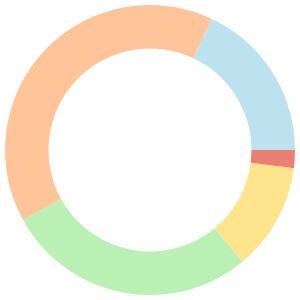7-day Meal Plan For Diabetics
Managing diabetes with diet doesn't have to be daunting. Learn how a 7-day meal plan can help control your blood sugar and improve overall health. We'll guide you through creating diabetic-friendly meals and turning them into a simple shopping list. Let's make healthy eating a breeze!




Meal plan grocery list
- Oatmeal
- Blueberries
- Almond Butter
- Chicken Breast
- Vegetables Roasted
- Brown Rice
- Salmon
- Asparagus
- Quinoa
- Eggs
- Whole-Grain Toast
- Strawberries
- Turkey
- Avocado
- Lettuce
- Tomato
- Baby Carrots
- Beef
- Vegetables Mixed
- Greek Yogurt
- Chia Seeds
- Tuna
- Mixed Greens
- Cherry Tomatoes

Article Reviewed
Meal plan overview
Managing diabetes through diet is key. A 7-day meal plan for diabetics is designed to maintain stable blood sugar levels. It includes low-glycemic foods and balanced portions of carbohydrates, proteins, and fats.
By following this plan, you can control your blood sugar more effectively, reduce the risk of diabetes-related complications, and even improve your overall health. It's not just a diet; it's a lifestyle change for better health.

Foods to eat
- Non-Starchy Vegetables: Spinach, broccoli, cauliflower, peppers, and other leafy greens.
- Lean Proteins: Skinless poultry, fish, tofu, legumes, and lean cuts of beef or pork.
- Whole Grains: Quinoa, brown rice, oats, and whole wheat products in moderation.
- Fruits: Berries, apples, pears, and other fruits with a low glycemic index.
- Healthy Fats: Avocados, nuts, seeds, and olive oil in moderation.
- Dairy or Dairy Alternatives: Low-fat or fat-free yogurt, milk, and cheese.
- High-Fiber Foods: Beans, lentils, and fiber-rich foods for better blood sugar control.
- Water: Stay hydrated with water as the primary beverage.
- Herbs and Spices: Use herbs and spices for flavor without added salt or sugar.
✅ Tip
Add a tablespoon of chia seeds to your breakfast to help stabilize blood sugar levels due to their high fiber content.
Foods not to eat
- Sugary Beverages: Avoid regular soda, sweetened drinks, and high-sugar fruit juices.
- Processed and Sugary Snacks: Chips, candies, and other high-sugar snacks.
- White Bread and Refined Grains: Choose whole grains over refined options.
- Fried Foods: Minimize fried foods and opt for healthier cooking methods.
- Highly Processed Foods: Limit consumption of highly processed and packaged foods.
- Fatty Cuts of Meat: Choose lean protein sources and trim visible fat.
- Full-Fat Dairy: Limit full-fat dairy products and choose low-fat alternatives.
- Excessive Alcohol: Limit alcohol consumption and be mindful of its impact on blood sugar.
- High-Sugar Condiments: Check labels for added sugars in sauces and dressings.
Main benefits
The 7-day Meal Plan For Diabetics is designed to manage blood sugar levels and support overall health for individuals with diabetes. By incorporating complex carbohydrates, lean proteins, and healthy fats, this meal plan helps regulate blood glucose levels. The emphasis on high-fiber foods aids in better blood sugar control and supports digestive health. Portion control and spacing meals throughout the day contribute to stable energy levels and blood sugar. The inclusion of nutrient-dense options promotes overall well-being and helps address specific nutritional needs for individuals with diabetes. Additionally, this meal plan encourages a balanced and sustainable approach to nutrition, fostering long-term health management.

Fat
Carbs
Protein
Fiber
Other
How to budget on this meal plan
To budget effectively for this 7-day diabetic meal plan, start by creating a detailed grocery list. This list should include oatmeal, blueberries, almond butter, chicken breast, a variety of vegetables like roasted ones, brown rice, salmon, asparagus, quinoa, eggs, whole-grain toast, strawberries, turkey, avocado, lettuce, tomato, baby carrots, beef, mixed vegetables, Greek yogurt, chia seeds, tuna, mixed greens, cherry tomatoes, cucumber, sweet potatoes, green beans, cottage cheese, peaches, honey, shrimp, and Brussels sprouts. By planning your meals and sticking to your list, you can avoid impulse buys and ensure you purchase only what's necessary. Buying in bulk, choosing seasonal produce, and opting for store brands can further reduce costs. Additionally, consider using leftovers creatively to minimize waste and save money.
Download the grocery list FREE
- Add & remove items
- Sort items by store aisles
- Share the list with others

Extra tips ✨
Any healthy snack ideas?
Snacks that are diabetic-friendly and help maintain blood sugar levels:
- Whole grain crackers with cheese
- Vegetable sticks with guacamole
- Handful of walnuts or almonds
- Sliced bell peppers with hummus
- Cottage cheese with cucumber slices
- Apple with peanut butter
- Greek yogurt with a handful of berries
What should I drink on this meal plan?
Individuals with diabetes should choose beverages that help maintain stable blood sugar levels. Water is crucial for overall health and blood sugar regulation. Unsweetened almond milk is a low-carb, diabetic-friendly option. Green tea can aid in blood sugar control. Black coffee, if consumed without sugar, is safe for diabetics. Finally, fresh vegetable juices, with minimal fruit content, are beneficial for their low sugar content.
How to get even more nutrients?
For those managing diabetes, it's all about keeping blood sugar levels steady while still eating nutritiously. Choose fruits and veggies that won’t spike your sugar, like leafy greens and berries. Lean proteins keep your energy up, and whole grains (in moderation) are great for fiber without the sugar crash. Nuts and seeds are perfect for a healthy fat fix.
Meal plan suggestions
7-Day Meal Plan for Diabetics
Day 1
- Breakfast: 1 cup of oatmeal with blueberries and almond butter
- Lunch: Grilled chicken breast with roasted vegetables and brown rice
- Dinner: Baked salmon with steamed asparagus and quinoa
Calories: 1200 Fat: 40g Carbs: 125g Protein: 70g
Day 2
- Breakfast: 2 scrambled eggs with whole-grain toast and strawberries
- Lunch: Turkey and avocado wrap with lettuce, tomato, and baby carrots
- Dinner: Beef stir-fry with mixed vegetables and brown rice
Calories: 1100 Fat: 50g Carbs: 95g Protein: 60g
Day 3
- Breakfast: Greek yogurt with mixed berries and chia seeds
- Lunch: Tuna salad with mixed greens, cherry tomatoes, and cucumber slices
- Dinner: Grilled chicken breast with roasted sweet potatoes and green beans
Calories: 1000 Fat: 40g Carbs: 75g Protein: 73g
Day 4
- Breakfast: Cottage cheese with sliced peaches and honey
- Lunch: Grilled shrimp skewers with mixed vegetables and quinoa
- Dinner: Baked chicken breast with roasted Brussels sprouts and brown rice
Calories: 1100 Fat: 40g Carbs: 105g Protein: 70g
Day 5
- Breakfast: Whole-grain toast with almond butter and sliced bananas
- Lunch: Grilled chicken salad with mixed greens, cherry tomatoes, and cucumbers
- Dinner: Baked salmon with roasted asparagus and quinoa
Calories: 1200 Fat: 45g Carbs: 105g Protein: 70g
Day 6
- Breakfast: Greek yogurt with mixed berries and honey
- Lunch: Turkey and avocado wrap with lettuce, tomato, and baby carrots
- Dinner: Beef stir-fry with mixed vegetables and brown rice
Calories: 1050 Fat: 50g Carbs: 100g Protein: 63g
Day 7
- Breakfast: Scrambled eggs with whole-grain toast and sliced strawberries
- Lunch: Tuna salad with mixed greens, cherry tomatoes, and cucumber slices
- Dinner: Grilled chicken breast with roasted sweet potatoes and green beans
Calories: 1050 Fat: 50g Carbs: 70g Protein: 70g
These values are approximate and can vary slightly based on specific portion sizes and preparation methods.
Download the FREE grocery list for this meal plan
Get grocery list
Want to learn more?
⚠️ Keep in Mind
As with any dietary change, it is recommended to consult with a healthcare professional or registered dietitian before changing your dietary habits.



